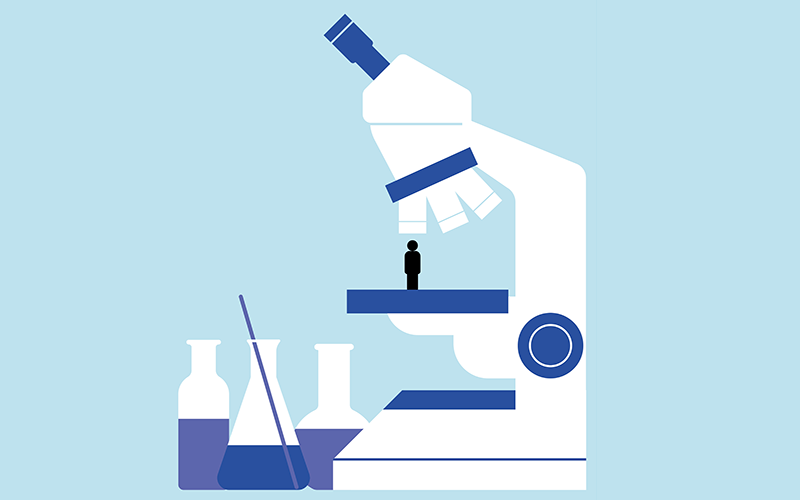This month we ask “How can we solve the current shortage of histopathologists?”

Kinjal Patel

Senior Biomedical Scientist - Advanced
Practitioner in Histological Dissection
Imperial College Healthcare NHS Trust
The UK is experiencing an increasing shortage of pathologists, which is also reflected globally. With the mounting demands on pathology services, new cancer pathway turnaround times, increased retirement rate and fewer numbers of trainees entering the UK pathology training scheme, effective solutions are desperately needed.
Combating the shortage is multifactorial. Firstly, we need to continue to support and promote biomedical scientist advanced career pathways. This requires more investment of time, training and money. This will allow pathologists to focus on urgent priorities while ensuring the patient pathway is efficient and effective.
Secondly, digital pathology should be implemented to allow for flexible working as well as off-site reporting. Additionally, there should be capacity to introduce new artificial intelligence software to support pathologists with diagnosis. Any digital platforms implemented should have the ability to be accessed off site to allow peaks in workflow to be shared among a network of pathologists and biomedical scientists.
Lastly, huge investment is required for a more accessible pathology management/IT system to allow inter-usability between trusts. This would support digital pathology, enable full off-site reporting and give access to the patient’s full record. This could also give pathologists in more rural areas with a smaller workload the opportunity to take on more work.
Aneela Arshad

Senior Biomedical Scientist
Deputy Laboratory Manager
Queen Victoria Hospital NHS Foundation Trust
The shortage of histopathologists is a serious and stark reality of current pathology services and is only set to worsen within the next five years when we will see a significant number of retirements. According to data from the Royal College of Pathologists (RCPath) there will be an additional 2% decrease in histopathologist roles by 2029, suggesting that targeted action, investment and workforce planning are required now to solve this issue.
Targeted action and investment are vital, however, this does not solely need to refer to histopathologists. There is a dynamic increase in the number of biomedical scientists excelling in further learning and undertaking the IBMS/RCPath Advanced Specialist Diploma in Histopathology Reporting. This is a key investment for the future and one I believe will help relieve the histopathologist deficit. However, the training required to undertake this qualification needs to be taken seriously and fully supported by departments in order to get the best out of candidates. There are plenty of biomedical scientists wanting to progress their career, with a passion for further learning and this is an incentive to allow clinical development, as opposed to the usual pathways of quality and management.
We have trained senior biomedical science staff in the reporting qualification in our department and it has been a tremendous accomplishment, not only for alleviating workforce pressures, but setting the bar for further staff development.
Maryam Shaikh

Specialist Biomedical Scientist
The Royal London Hospital
It is no secret that there is a shortage of histopathologists in the UK. This shortage can be addressed through several measures. One way is to increase the number of individuals being trained and recruited into the field by offering more training programmes and opportunities for gaining experience in histopathology. Additionally, providing financial incentives may encourage more people to pursue histopathology as a career. To retain histopathologists, working conditions should be improved to increase job satisfaction. This can be achieved by investing in better technology and infrastructure, providing more opportunities for professional development and training, and creating a more supportive and collaborative working environment.
Another solution is to expand the use of biomedical scientists to report larger benign cases, which can free up histopathologists to focus on more complex cases, reduce their workload, and create new opportunities for biomedical scientists to progress into specialised roles. Digital pathology and the use of artificial intelligence can also help address the shortage of histopathologists by digitising microscope slides and reading them to look for specific patterns to aid diagnosis. This advancement in technology will improve access to pathology services, ultimately reducing turnaround times for pathology results by increasing efficiency and potentially opening the door to outsource work globally to offer a 24/7 reporting service.
Image Credit | Shutterstock




